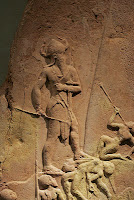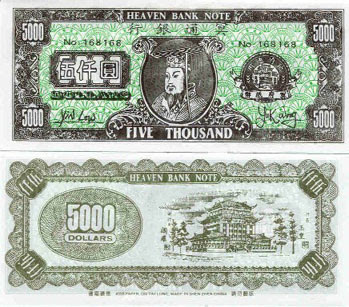The Akitu: blood part 2.
 Though it is perfectly sensible to describe sacrifice as a means of purification as used in the Mesopotamian festival of Akitu, I could write a similar post about the ritual use of chlorine- linking its bleaching effect to the symbolic purity of white. Linking its use in the first world war as a means of purifying Europe of one's enemies.
Though it is perfectly sensible to describe sacrifice as a means of purification as used in the Mesopotamian festival of Akitu, I could write a similar post about the ritual use of chlorine- linking its bleaching effect to the symbolic purity of white. Linking its use in the first world war as a means of purifying Europe of one's enemies.Well, those symbolic links are there.
I want to go back to the Akitu because I think that animal sacrifice understood as a descent into primal chaos and a return to celebration, as the establishment of order, began I think, with a misunderstanding of the Akitu.
A misunderstanding of how ritual works.
The name (Sumerian) Akitu, means barley, and the oldest Akitu was probably once linked to Dumuzi and Geshtinanna therefore originally to the power within the soil. Like the November poppy celebration, a lament for lost youth perhaps.
The Akitu, or rather the Great equinox festivals began in the great city of Ur. And were celebrated with a parade of the God's statue representing the return of Nanna from his period of seclusion within the Akitu house ~ link~
The position of the stars, the Pleiades, 'The Seven' threatened disorder to the year, a threat that ended with the appearance of Nanna- and an extra month on the calendar every so often.
It is said that the Seleucid era Akitu became an enactment of the creation of the ordered world by Marduk, from the remains of Tiamat via a recitation of the Enuma Elish and that the Akitu was a celebration of divine kingship.
It contains some puzzling elements, if that was the case.
Rather than honouring the king as the embodiment of Marduk the divine king who cut the primordial mother Tiamat into two halves and created the world, the king must kneel before the priest who will take away his symbols of authority and slap him around the face a few times, demanding that he makes a confession of any ill will towards Babylon.
The translation of the Akitu that caused this festival to be seen as a great cosmic enactment, is a Seleucid era tablet (312 – 63 BC). At that time, post Alexander The Great, Hellenistic kingdoms were established throughout the Middle East and a Syrian king ruled in Iraq.
If this was a time of increased anxiety for the priesthood it is hard to know.
What ever else has been said about the Akitu, clearly the festival contains a warning about the nature of kingship, whilst making the symbolic destruction of the temple a locus of anxiety.
For the temple represented the continuity of civilisation.
Without it, Babylon would fall.
Seen in this light, the rites of ''purification' of the temple are not purification.
They are its symbolic destruction.
The water taken from a well in which the waters of the Tigris and Euphrates mixed, is the unpredictable flood.
And the sheep slaughtered inside the temple is the memory and the experience of war handed down and replayed, over and over from generation to generation. The sheep bleeds as the dead, killed ultimately by the actions of avaricious, power seeking kings.
The priests and exorcists who take part in the purification are banished from the temple. The blood does not make them clean.
There is no primordial establishment of order out of chaos in the Akitu.
The country's blood now filled its holes, like metal in a mold;There is just fear and memory and the need to deal with it, preferably in a symbolic way, a magic spell for continuity despite all that can and will occur in Iraq.
bodies dissolved -- like butter left in the sun.



